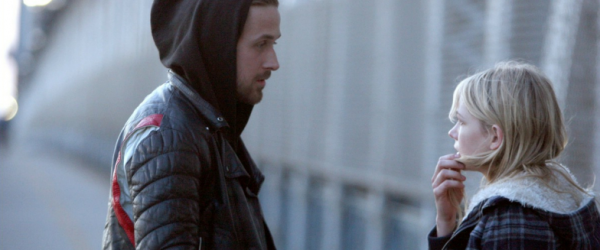
Blue Valentine, and Why It’s Important to Break Hearts
Art, Film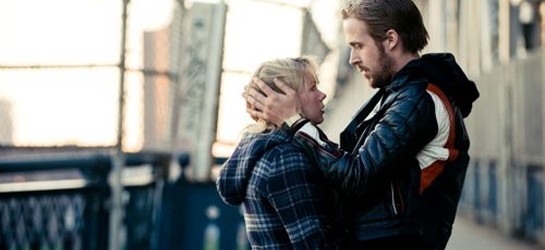
The thing about Blue Valentine, one of the best films of 2010, is that it’s not really all that pleasant to watch a lot of the time. It’s ugly in places because people are ugly in places. Writer/director Derek Cianfrance offers us the very small and simple story of two people falling out of love, which is made all the more painful by the recurring reminder of how good things used to be, in the form of extended flashbacks to a brighter time in the pair’s relationship. It hurts because it’s true. So why should anyone sit in a theatre and pay a bunch of money to watch the harrowing realities of modern love, when they can float away on a cream puff, watching a bloated Adam Sandler snicker through a movie about the wacky things a man will do for a swimsuit model’s huge tits? I thought you’d never ask!
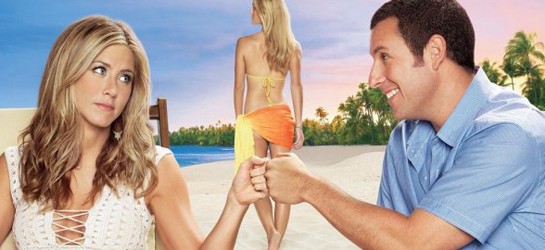
Hilarious, right?
We need at least some of our artistic oeuvre to try to capture the authentic human experience, or we relinquish our ability to make history out of a constantly shape-shifting culture. So much cinema is devoted to escapism, which isn’t necessarily a bad thing, nor is it necessarily ignorant of the collective condition. Give the people what they want, right? The whole craft of movie-making has been built on taking audiences out of the ordinary and into the visceral, and the changing shape of such fantasy provides deep insight into our more universal aspirations and terrors, as they evolve over time. But if we want our contemporary offerings to resonate, then we need to balance pure imagination with the hurt and joy of real life as well.
Blue Valentine is gritty; grittier than most of the pop-violence we’re so masochistically drawn to, because the pain of a broken relationship is one that we all know. Dean (Ryan Goseling) and Cindy (Michelle Williams) have simply grown apart; while she’s fallen out of love with him, he has fallen into a stasis of morning beers and paunchy lethargy. This is a pain that is difficult to accept, as either the broken-hearted or the voyeur. There is no great betrayal or abuse, no villain. Yet every day, people just like Dean and Cindy lose the magic that had for a time given them the euphoric, narcotic love that art has taught us for centuries to strive for. And there’s just no good reason. That’s life, and Blue Valentine is brave enough to not try to make the couple’s nadir any more poetic than it deserves to be.
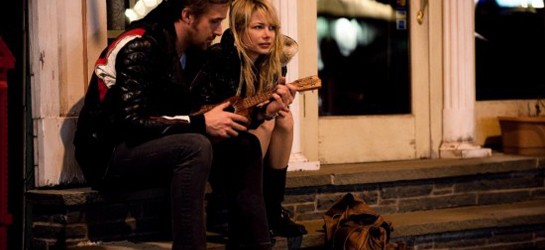
Strangely, it’s a rare opportunity to see real people suffer through the painfully ordinary act of breaking up on film, without the bells and whistles of a Hollywood cash machine. It’s painfully ordinary because it happens every day, but Blue Valentine also reminds us that like the love that it’s left behind, every break-up is its own unique work of art. It is a fascinatingly human moment, largely because we have turned our expression of love into such an artifice. That’s what it is for Dean, it’s a movie-love that he’s found in Cindy. He’s willing to go against extraordinary odds because she’s It for him, just like it’s meant to be on the silver screen. It gives Blue Valentine a very post-modern self-awareness: the film itself, like Dean’s character, is grappling with what we’ve all come to know as love and heartache through what we’ve seen in the movies.
Pain aside, the film is also funnier than the average moronic date-comedy that squanders a huge budget on everything but well-written jokes, because we all know what a relief a light heart can be in truly tense times. Dean is still a child, which is wonderful and funny as we see him really play with his daughter. There is depth to him, and it helps define his naivety. His ability to still have fun, simple as it may seem, is also a foil to Cindy’s utter joylessness, and his repeated and recurring spots of humour are like big bright beams slicing through so much grey.
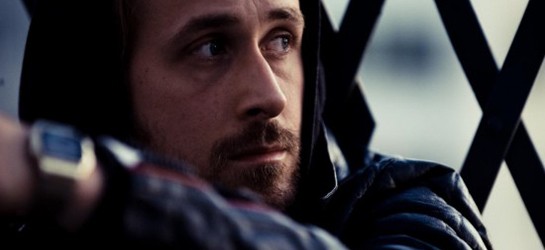
This is a film of contrasts. Blue Valentine is sexy and bitter and sad, and stays with you for days. It’s also the work of two actors who are truly in their own class. Both Goseling and Williams achieved huge pop success (with The Notebook and Dawson’s Creek, respectively), only to translate that good fortune into a freedom to push their craft forward, choosing work that is not only exciting and honest, but frequently challenging and non-commercial. Goseling in particular, with starring roles in Half Nelson and Lars and the Real Girl, is at the forefront of his generation of actors with a passion for strong character work over easy money. Blue Valentine is an opportunity for both actors to do what they do best: make flawed, human characters immensely watchable and empathetic, even in dark times. They both become so completely immersed that there is no line between actor and character, and their authenticity is crucial to the film’s success.
Cianfrance, who has made his presence as a filmmaker immediately important with this, his second feature, had Goseling and Williams share a living space for a month before shooting the film’s break-up scenes, staging fights and forcing the actors to live on their characters’ meager earnings. This is clearly a director interested in everyday life when it’s been pushed just past the point of comfort. His next feature, Metalhead, about a recently deaf drummer, will again take a lo-fi, natural approach, apparently using unknown actors playing themselves.
And so as long we have Blue Valentines out there, earning acclaim and reminding us of the power of film to tell our stories, there is hope for the real and honest amidst the sea of construction-paper caricatures and indulgent violence that fuels the business of film. There is nothing wrong with lions and witches and wardrobes, but sometimes the biggest hurt or the biggest joy is right there in the smallest of places.






















